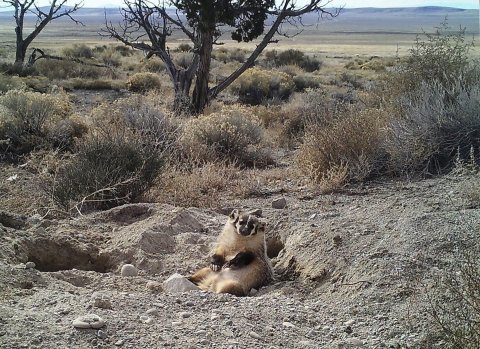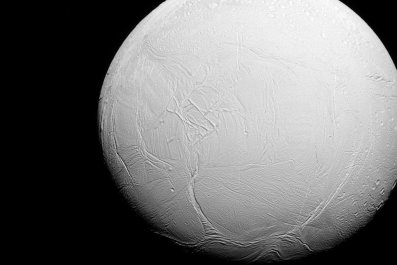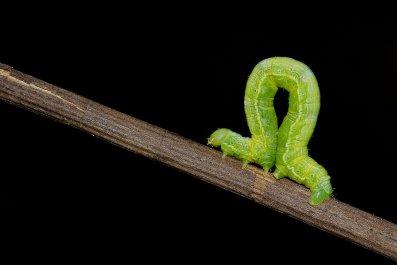At first, Evan Buechley, a doctoral student at the University of Utah, was disappointed. He'd spent a lot of time and effort dragging a cow carcass to a wild area in the northwest part of the state and then staking it down to study what scavengers might come to eat it, and how. But it appeared that some creatures, perhaps a band of coyotes, had managed to drag it away.
But his chagrin turned to elation upon downloading photos from the motion-triggered camera next to the kill: The pictures revealed a badger completely burying the cow, something that has never been witnessed before. Another of the seven carcasses he left out in the wilderness had almost been buried by another badger in under two days.
Prior to this finding, detailed in a study published Friday in the Western North American Naturalist, badgers were known to "cache," or bury, only small creatures like rodents and, on the large end, jackrabbits. But badgers had never been witnessed burying anything bigger than themselves, let alone a calf carcass that weighs 50 pounds and was four times their size.
As Buechley, first author Ethan Frehner, a senior at the University of Utah, and other authors explain, the two beef-seeking badgers excavated large holes underneath the cows that then collapsed, allowing the animals to make their bovine quarry "disappear." The two creatures then spent up to 11 days in their new underground abode, feasting on dead meat and sleeping.
"This [burying] method shows an impressive bit of design and intention behind it," Buechley says.
Robert Harrison, a wildlife biologist at the University of New Mexico who wasn't involved in the paper, says the finding and video "[give] us but a fleeting and alluring glimpse into the world of badgers, a world many of us biologists would love to enter and stay in for a long, long time. Being mindful, of course, that eating rotten meat in a dirt burrow suits badgers much better than us."

Badgers are omnivores that will feed on a wide variety of foods. They seem to prefer rodents like ground squirrels, prairie dogs and mice, but also eat roots and berries and carrion. Many ranchers tend to dislike badgers, because they dig holes that can cause injuries to cattle, but Buechley says the recent finding suggests badgers could play a useful role for ranchers by burying diseased animals and thus perhaps preventing the spread of pathogens.
"That such a small animal would expend the time and energy to bury a carcass larger than itself shows the tenacity and determination that it takes to survive in nature," Harrison says. "Badgers, like most solitary animals, have only their wits and their own bodies with which to face every challenge nature presents, from predators to starvation to bad weather to mankind. The badger in the video clearly understood the bonanza it had found and took full advantage of it regardless of how exhausting burying the carcass might have been. That badger was no fool."
On the other hand, he notes, two other badgers fed on two other staked out carcasses without burying them, suggesting that this is a behavior that varies by individual. Just like in other animals, some badgers seem to be more willing than others to take on a challenging task, says Howard Clark, a wildlife biologist who works with a consulting group in California and has studied kit foxes and badgers. He adds that badgers may play a larger than expected role in breaking down and recycling the nutrients from large animals.
Badgers are found from Mexico to the United States to Canada, where they have been classified as endangered. They are doing better in the United States, though they have been extirpated from many areas, and their population is declining.
Buechley says the finding shows the importance of this kind of basic research into the natural world, which is becoming more difficult to get funded. (This study was supported by a grant from the National Science Foundation.)
"I was really excited and kind of surprised to find this very common large mammal right in our backyard had this unknown behavior," says Buechley. "If we don't know such a conspicuous behavior of one of the most widespread animals in North America, [imagine all] we don't know about the natural world."





















